According to expert research, the property management market is expected to eclipse $22 billion by 2023, with a compound annual growth rate (CAGR) of 8.8%.
This type of growth makes it really appealing for entrepreneurs to start a rental property management business.
But managing properties at scale isn’t easy—dealing with tenants, landlords, maintenance, leasing, vacancies, and a seemingly never-ending list of tasks is a huge project to take on.
Starting your rental property management business the right way will put you on a path to success and growth.
With help from this guide, you can eventually get to the point where your properties manage themselves on autopilot while you can sit back and count your profits.
The Easy Parts of Starting a Rental Property Management Business
The easiest part of starting a rental property management business is the actual business formation process. Lots of new property managers are intimidated by this step because it involves lengthy paperwork and filing applications with the secretary of state’s office.
But you can just use an online business formation service to handle everything for you, eliminating the time and headaches associated with creating a legal entity for your management company.
There’s also a high demand for property managers nationwide. Most investors and property owners don’t want to be hands-on managing their properties, especially if they own multiple units. That’s where you come in and make their life easier.
Right now, there are opportunities for property managers in the residential rental space, commercial property space, community associations, and more.
While it may seem intimidating to take on so many different property types, tenants, and clients, property management software simplifies everything.
With tools like Buildium, you can get your rental property management business off the ground in no time and scale it with ease.
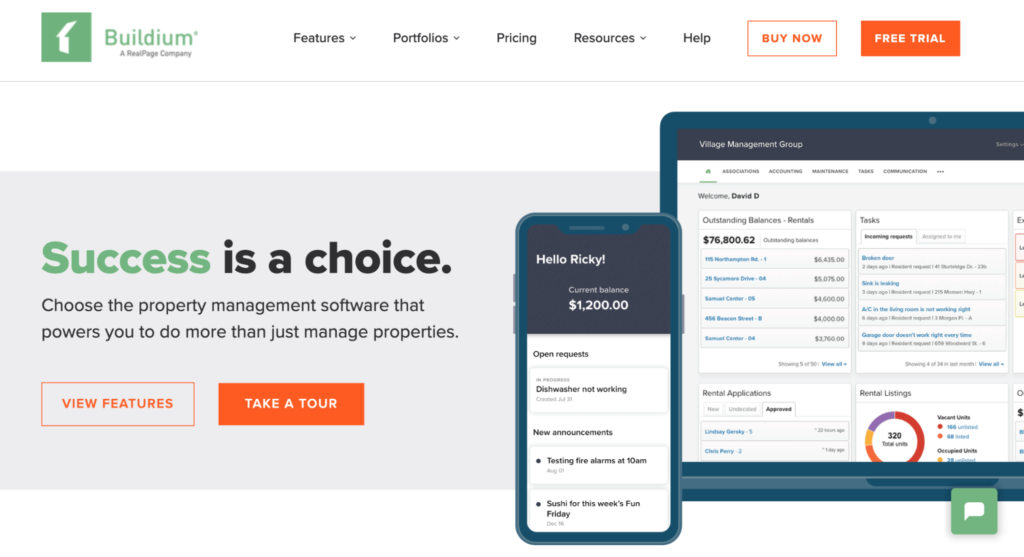
Buildium has everything you need to manage properties from the ground up. The software has solutions for electronic leasing, e-signatures, tenant screening, online payment acceptance, property inspections, and more.
You can use the software to share financial insights with property owners in real-time through a dedicated owner portal.
For property management companies, Buildium makes it easy to communicate with tenants, owners, and vendors through a single source of truth. From tenant maintenance requests to showcasing vacancies and branding your business with a professional website, Buildium has it all.
Plans start at just $50 per month, and you can try it for free with a 14-day trial.
The Difficult Parts of Starting a Rental Property Management Business
While getting started is fairly simple, property management companies face different challenges as they operate. If you’ve worked in the real estate industry before, you’re likely aware of the constant surprises and unique scenarios that you’ll be presented with.
For those of you who are new to the industry, be prepared for a bumpy ride.
Most of the problems will be related to your tenants. While the vast majority of tenants will be quiet and low-maintenance, a handful of them will really make you earn your keep.
Some tenants just love to bother property managers on a seemingly daily basis about minor things like broken light bulbs or barking dogs across the street. Other tenants stop paying rent, trash properties, or constantly bother other tenants with parties and loud music.
In some cases, you’ll have to deal with actual problems related to the properties you’re managing, like phone calls in the middle of the night about broken pipes or busted hot water heaters.
You should also be prepared to deal with high-maintenance property owners. Some owners expect vacancies to be filled in a day or two and will really hassle you if you’re not getting new tenants on a lease.
There are so many different laws associated with managing properties as well. Most of these rules and regulations favor the tenant. So you’ll really need to keep pace with these laws and stay informed to ensure your management business is compliant.
Step 1 – Set Up Your Rental Property Management Business
Before you can start shaking hands with property owners and getting new tenants to sign leases, you need to focus on the legal aspects of starting your property management company.
These initial administrative tasks are an absolute must if you want to remain compliant, reduce your liability, and ensure good standing with the state.
Legally Form a Business Entity
The first thing you need to do is legally form your business. Run a business name search through your state’s database, and file the appropriate paperwork with your secretary of state’s office. The exact paperwork you need to file will depend on the entity you’re forming and your state’s requirements.
For the most part, you’ll be deciding between an LLC or a corporation. Each option has its pros and cons for things like taxation and scalability.
If you’re keeping the operation smaller, an LLC should be sufficient. But if you’re starting the business with multiple partners or outside investors and plan to bring the company public one day, a corporation will be a better option.
I recommend using an online business formation service for the setup.
Platforms like LegalZoom, Incfile, ZenBusiness, and Inc Authority are all great options. These services will fill out the applicable forms and file the paperwork with the appropriate state agencies on your behalf—simplifying the formation process.
Obtain Licenses and Certifications
Most states require some type of licensing to operate a property management business. So you’ll need to research your state guidelines and make sure you fully understand the requirements to legally practice in your location.
Generally speaking, these licenses can be segmented into two categories:
- Real Estate Broker License — To become a licensed real estate broker, you need to take courses and pass an exam. In addition to topics related to property laws, taxes, insurance, and contracts, the exam also includes property management.
- Property Manager License — This isn’t as in-depth as a real estate broker license. But completing coursework and passing an exam is still required to get certified.
While certain licenses and certifications may not be a state requirement, it’s still a good idea for you to get them. Property owners will feel more comfortable signing you on to manage their properties if you’re certified.
The following associations are a great place to start your education and get your licenses:
- National Association of Residential Property Managers (NARPM)
- National Association of Realtors (NAR)
- National Apartment Association (NAA)
- Institute of Real Estate Management (IREM)
Even after you obtain the bare minimum licensing requirements, you can still use these associations for continued education and certifications.
Launch Your Website
Your website will be the foundation of your business. It’s a great way for you to market yourself to property owners, and you can ultimately use it to list available units and communicate with prospective tenants.
It’s important to have this site in place from the start. Otherwise, property owners might be hesitant to use your newly created business.
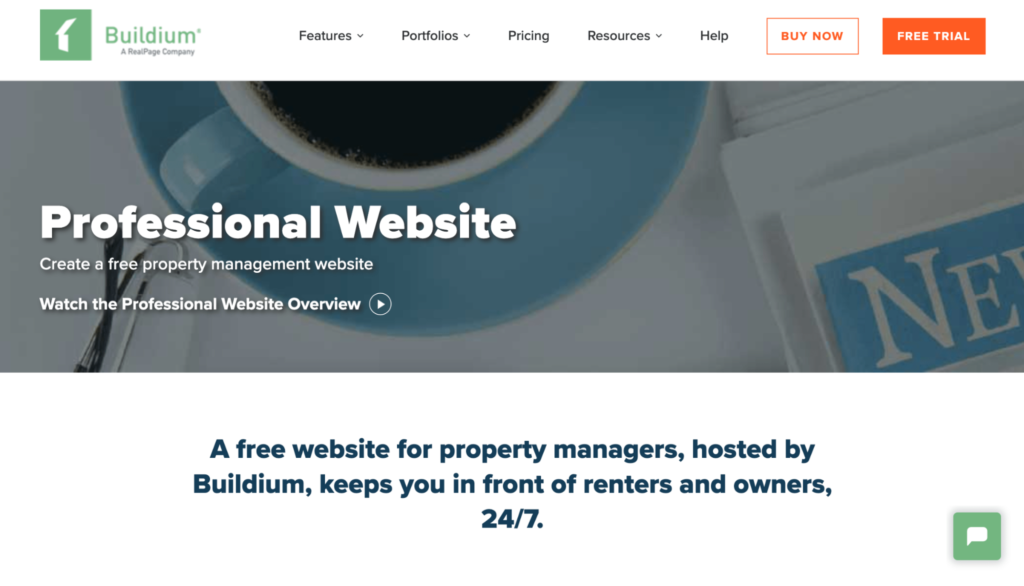
With Buildium, you can create a property management website for free. This is an ideal scenario for any new property management company.
The site already has all of the tools and functions you need to succeed in this space. Now it’s just a matter of customizing it with your business name and branding materials.
Step 2 – Organize Your Finances
You can’t just blindly start signing contracts with property managers and taking on new responsibilities. First, you need to have a clear picture of your finances.
While getting new business is obviously great, you don’t want to scale too quickly to the point where you’re running out of money.
So a firm grasp on your financial landscape will make it easier for you to understand exactly what you can handle.
Set Up Your Accounting System
Ditch the spreadsheets and handwritten books. Success here all starts with the right accounting system. All Buildium plans have built-in accounting tools.
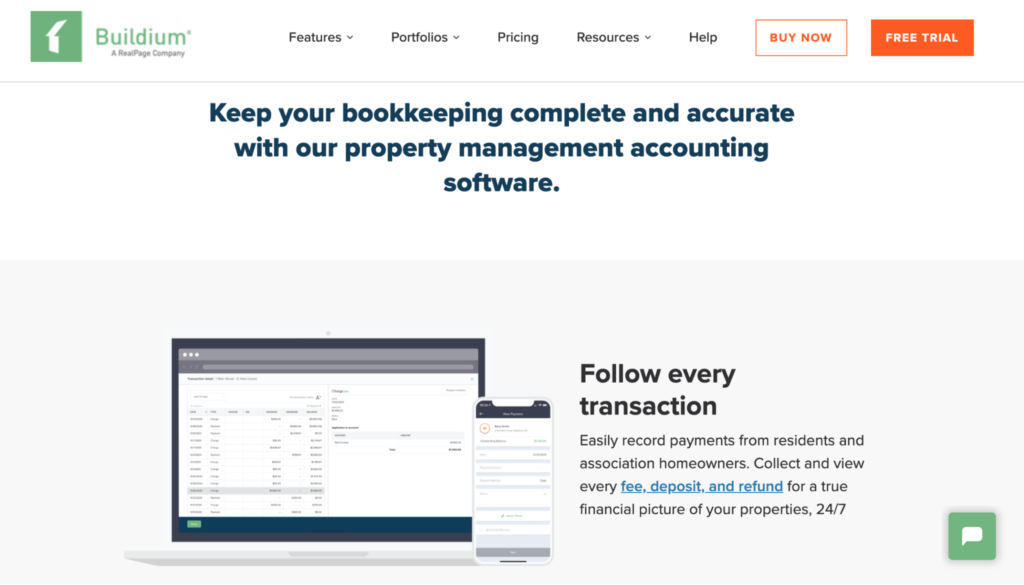
The great part about using Buildium for accounting is that it’s a fully integrated solution. So you don’t have to worry about exporting anything to a third-party accounting tool—everything can be managed in a single place.
When you’re first getting started, you can use the software for things like goal setting, revenue forecasting, and preparing for expenses.
You’ll need to factor in overhead costs, payroll fees, vendor fees, membership fees, insurance, and more. If you’re setting up a brick-and-mortar location, you’ll also need to think about rent, utilities, office furnishings, etc.
Once you start signing contracts with property owners and actually manage properties, Buildium’s accounting software will make your life much easier.
The software has tools for managing accounts payable. You can turn work orders into bills, set up recurring payments, and even reconcile your bank accounts automatically.
Step 3 – Assemble Your Property Management Team
When you’re first starting out, you might decide to handle all of the responsibilities of managing properties on your own. But this isn’t reasonable to do at scale.
If you’re planning to manage dozens or hundreds of units, you’re definitely going to need some help.
Putting some of these roles in place from day one will add to your costs, but it will allow you to take on additional units faster.
Find the Right Employees, Contractors, and Vendors
Identify your needs and decide who you need to hire first. These roles can be full-time employees, part-time employees, or independent contractors. You can even form relationships with third-party vendors for things like maintenance requests.
Positions and responsibilities you need to think about include:
- Property managers
- Receptionists and administrative employees
- Maintenance workers (cleaning, repairs, etc.)
- Payroll staff
- Leasing agents
- Property showing coordinators
- Move-in and move-out coordinators
- Contractors for painting, plumbing, roofing, landscaping, electrical, HVAC, etc.
You’ll also need to consider professional services for accounting and real estate lawyers.
Step 4 – Form Relationships With Property Owners
Now it’s time to start finding properties to manage. In addition to your website, there are other ways to make your rental property management business more attractive to property owners.
Buildium has an add-on feature to grow your portfolio. It’s the largest online network for connecting rental property managers with owners.
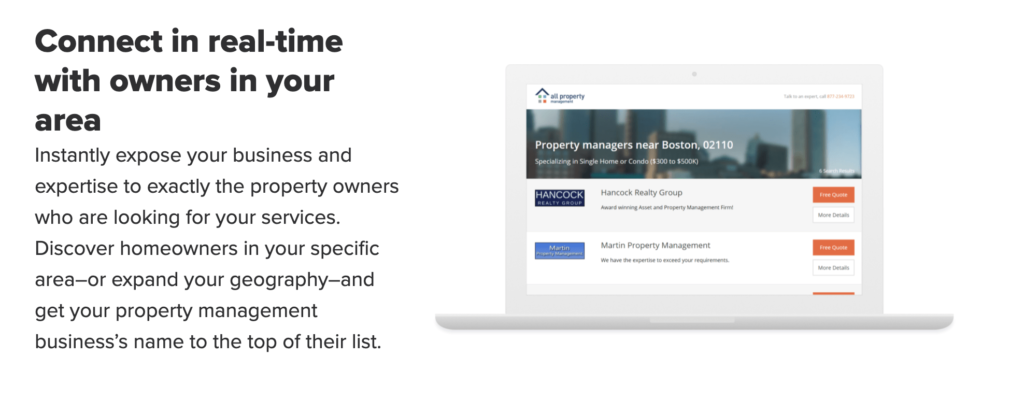
It’s a pay-per-lead solution powered by All Property Management. You’ll benefit from targeted advertising in specific zip codes based on the property types that you want to manage.
These leads will be delivered straight to your inbox.
Buildium’s Premium plan also comes with a dedicated growth consultant for new client leads. This package starts at $460 per month.
Establish a Pricing Structure and Create a Management Contract
Do a little research in your area to see how competitors are charging property owners. This will give a baseline for setting your fees.
Most property managers either charge a percentage-based fee or flat fee for management services. Percentage fees typically fall in the 8% to 12% range of the rent per unit.
Your base service package will typically include tenant communication, rent acceptance, inspections, and other basic duties. You could also upcharge for things like:
- Initial setup fees
- New leasing fees
- Lease renewal fees
- Eviction fees
Alternatively, you could increase your percentage-based rate to include everything in your base package. All of your pricing should be clearly outlined in your contracts with property owners.
With Buildium, owners can pay you directly through the platform, making it easy for everyone involved.
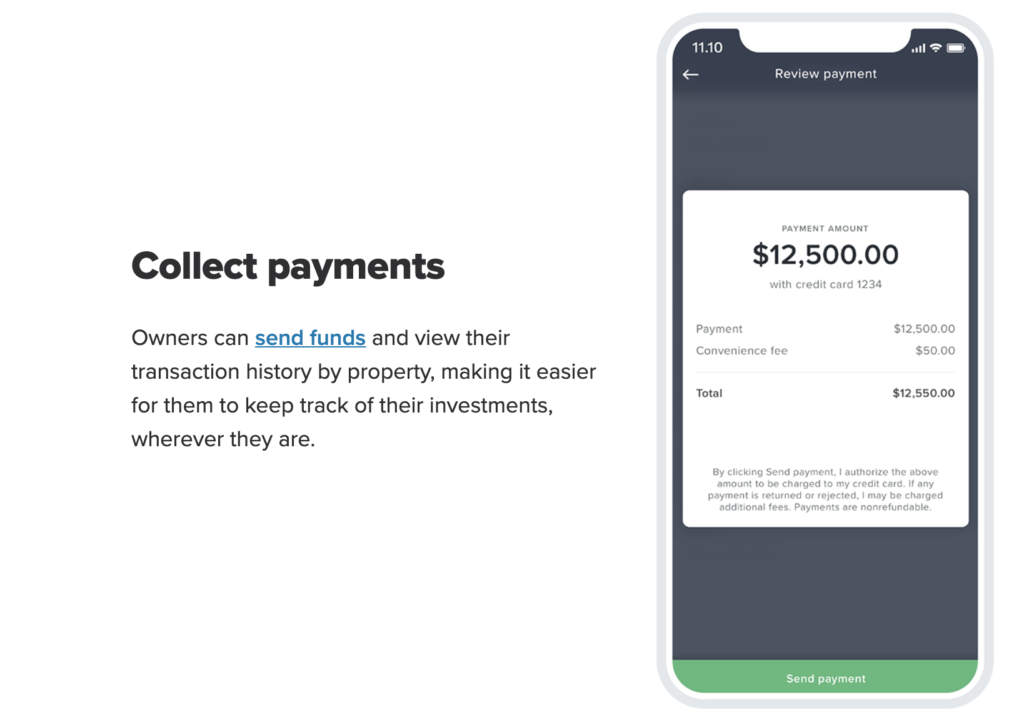
Step 5 – Focus on the Tenant Experience
The last thing you need to do is set up your system for managing residents. Simply giving them a phone number and telling them to call you if they need anything isn’t the way things are done in the modern era of property management.
Everything has gone digital—from leasing to payments and even resident communication. So you need to use property management software that offers these features.
Leasing
Buildium is great because it has built-in services that accommodate tenant screening. So when prospective tenants apply, you can weed out the ones who don’t qualify before sending them a lease.
The solution also comes with lease management software.
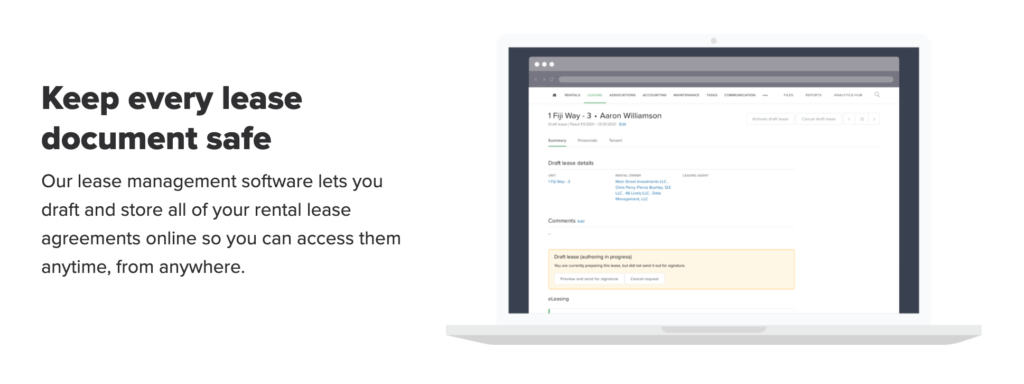
You can easily set up a new lease by creating templates to save time with each new lease and renewal. Buildium will autofill data on each template, so you don’t need to manually create each new lease from scratch.
The software also lets you add your company’s branding to each page on the header or footer.
Best of all, Buildium supports electronic leasing and e-sign. So you won’t have to meet your tenants in person to collect signatures and make things official.
Resident Portals
Once the lease has been signed, you can set each tenant up with an online resident portal. Buildium’s software supports features like:
- Online rent payments (including recurring payments)
- Ability for tenants to check their payment history
- New maintenance requests
- General inquiries
- Text and email updates for announcements
- Message boards for tenant communication
- Document sharing
If you’re managing a community association, like an HOA, you can even use the resident portal to share things like community financials and updates from board members.
Not only does this make things easier for your tenants, but it also simplifies everything for you and your management staff.
from Quick Sprout https://ift.tt/3l2SB2r
via IFTTT
